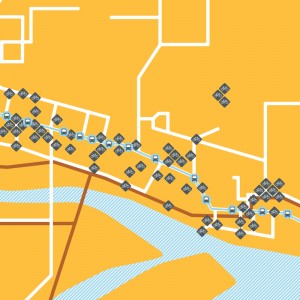
Guangzhou, one of the fastest growing cities in the world, has gained almost three million inhabitants in the past decade. The resulting increase in traffic congestion led the city and its agencies, including the Guangzhou Metro Design Institute, to design a new high-capacity public-transit system, the Guangzhou Bus Rapid Transit (GBRT), to help cut carbon emissions, reduce gridlock, and reclaim streets and public spaces for residents.
The GBRT system’s ridership of 800,000 a day, second only to Bogotá’s Transmilenio, surpasses that of each of the city's five subway lines. The sustainable system features dedicated bus lanes and infrastructure improvements to move buses 30% faster; intermodal integration with subway lines and a bike-sharing system; and a pre-ticketing smart card, multiple large doors, and flush platforms to reduce boarding time. GBRT is the first in China to include bike parking in its stations and to connect BRT stations to the subway via tunnels, reducing transfer time. Its twenty-six stations and forty-two bus routes are laid out along Zhongshan Avenue, whose innermost lanes form a 23-kilometer (14.3-mile) dedicated bus corridor linking the city center to the fast-growing eastern section of the city, twenty poorer urban villages, and business and residential areas, meeting the transportation needs for a cross-section of the population.
In its two years of existence, the BRT system has captured 30% of the city's public transport mode share, in addition to the 2011 Sustainable Transport Award. It is one of two systems (along with Bogota, Colombia) to attain a Gold Standard Rating from the Institute for Transportation and Development Policy in 2011.